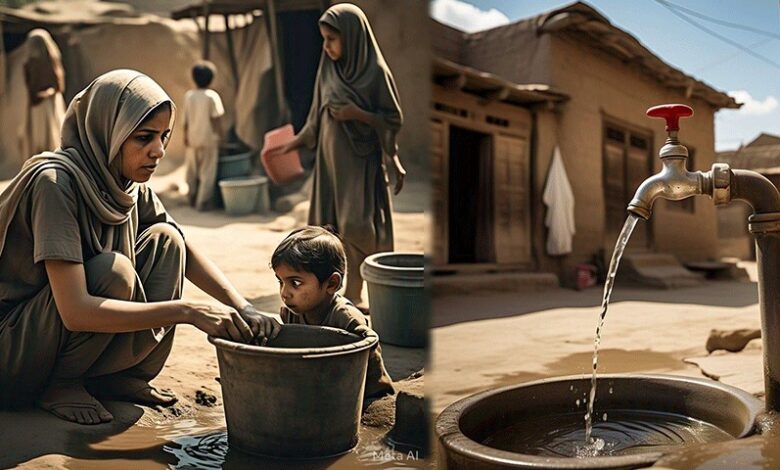Severe Water Shortage Forces Authorities to Limit Water Supply to Drinking Purposes Only

As Pakistan prepares for the Kharif season, the country is facing an extraordinary water shortage, prompting authorities to restrict water supply for agricultural use to drinking purposes only in April.
A meeting of the Indus River System Authority (IRSA) Advisory Committee was held on Wednesday, where it was decided that the situation will be reassessed in May before making any further water allocations. Authorities have raised concerns about dwindling dam levels, decreasing river flows, and insufficient snow reserves in the mountains.
The meeting revealed that dams are running low on water, river flows have dropped, and the reduced snow reserves in the mountains are unable to support adequate river flow. At the Ram stations, there is a 51% water shortfall, while at the provincial canal heads, it has exceeded 60%.
IRSA typically allocates water for the season in three phases, but due to the worsening climate situation, the authority is now reviewing allocations on a monthly basis. For April, the committee approved a 43% system shortfall, which was further reduced.
According to the Meteorological Department, rainfall in the northern and southern regions of the country has been lower than usual, and temperatures have been higher than average. Snowfall in the Indus and Jhelum rivers was 31% lower than normal, significantly affecting river flows.
Punjab and Sindh have agreed on water distribution for one month, but Sindh has raised objections to the three-tiered water distribution formula. Sindh has demanded that water shares be calculated according to Clause 2 of the Water Agreement, which could result in water shortages exceeding 55% in April.
The water crisis has emerged at a critical time, as the Kharif crop season, which spans from April to September, is about to begin. Important crops like rice, sugarcane, cotton, maize, and lentils are at risk. Irrigation experts have warned that if the situation does not improve, it could have devastating effects on agriculture.
**Crops Affected:**
The lack of rainfall has also led to lower-than-usual snowfall in the northern regions of Pakistan, which will impact the wheat crop. Normally, the melting snow provides a significant amount of water, but this year, the absence of adequate snowfall will affect water availability.
Both Mangla and Tarbela reservoirs are already facing drought conditions, raising concerns about a potential crisis. While rainfed wheat is already suffering, regions that rely on canal irrigation will also be impacted by the ongoing drought.
**When Could the Situation Improve?**
Experts believe that the situation may improve in May or June when the glaciers begin to melt. However, the current circumstances remain difficult, with growing threats to wheat, mustard, and chickpea crops.
**Meteorological Department Issues Drought Alert:**
Due to 62% less than average rainfall, the Meteorological Department has recently issued a drought alert. The department reported that from September 1, 2024, to March 21, 2025, rainfall in the country was 40% below normal. In Sindh, rainfall was 62% less than usual, and in Balochistan, it was 52% lower. In Punjab, rainfall was 38% below average, and in Khyber Pakhtunkhwa, it was 35% less.
According to the Meteorological Department, recent rains have improved conditions in some central and northern areas, but drought continues in the southern parts of Sindh and Balochistan, and the eastern plains of Punjab.
Currently, both Mangla and Tarbela dams are facing severe water shortages, and the average temperature in southern areas in March was 2 to 3 degrees higher than usual. The department also noted that some southern regions have experienced more than 200 consecutive dry days, and the situation in these affected areas is expected to worsen further.






